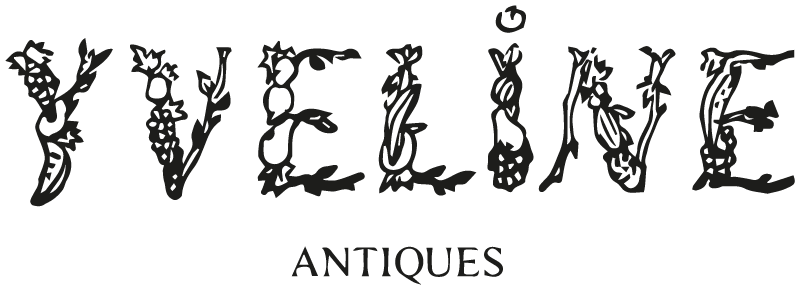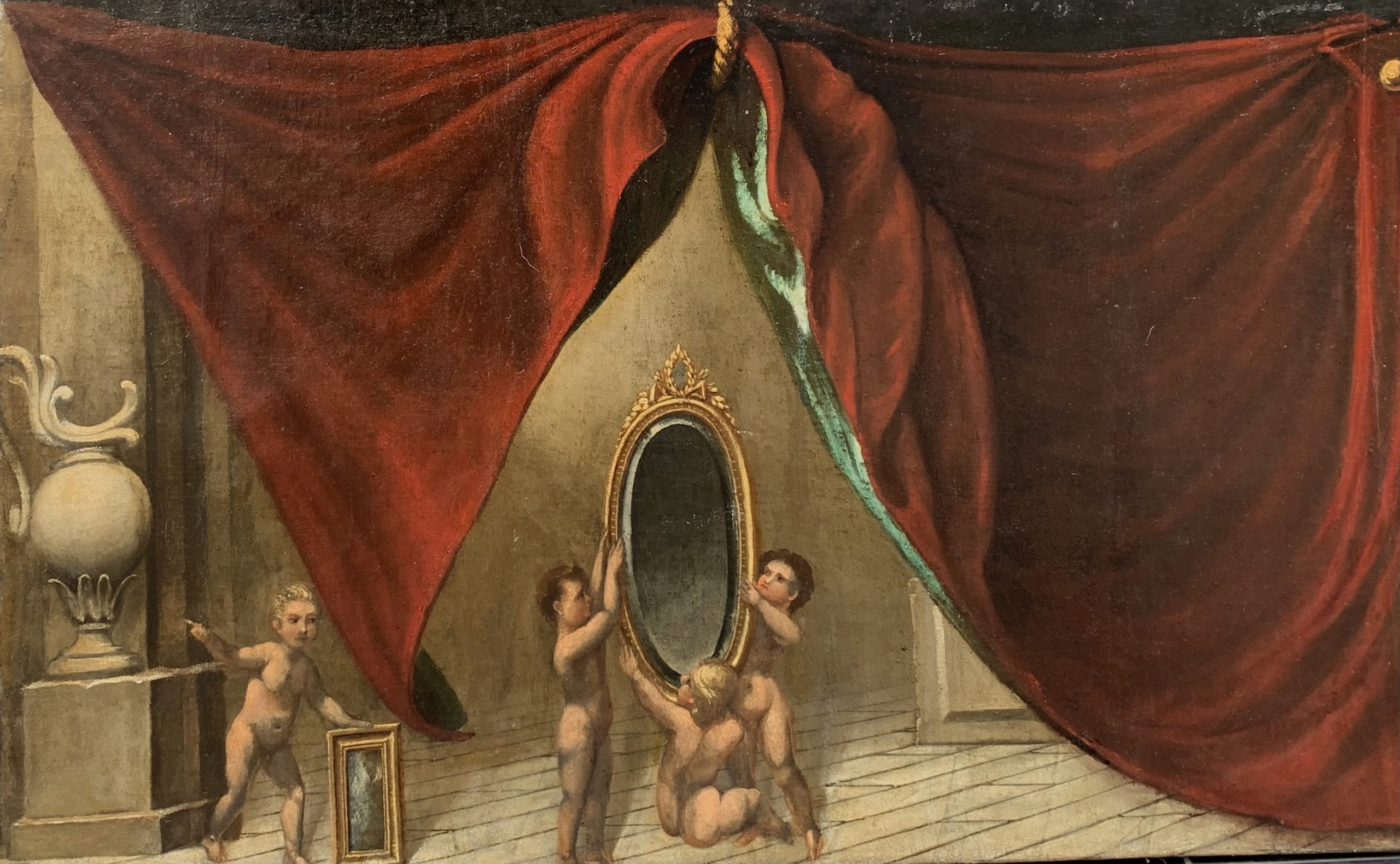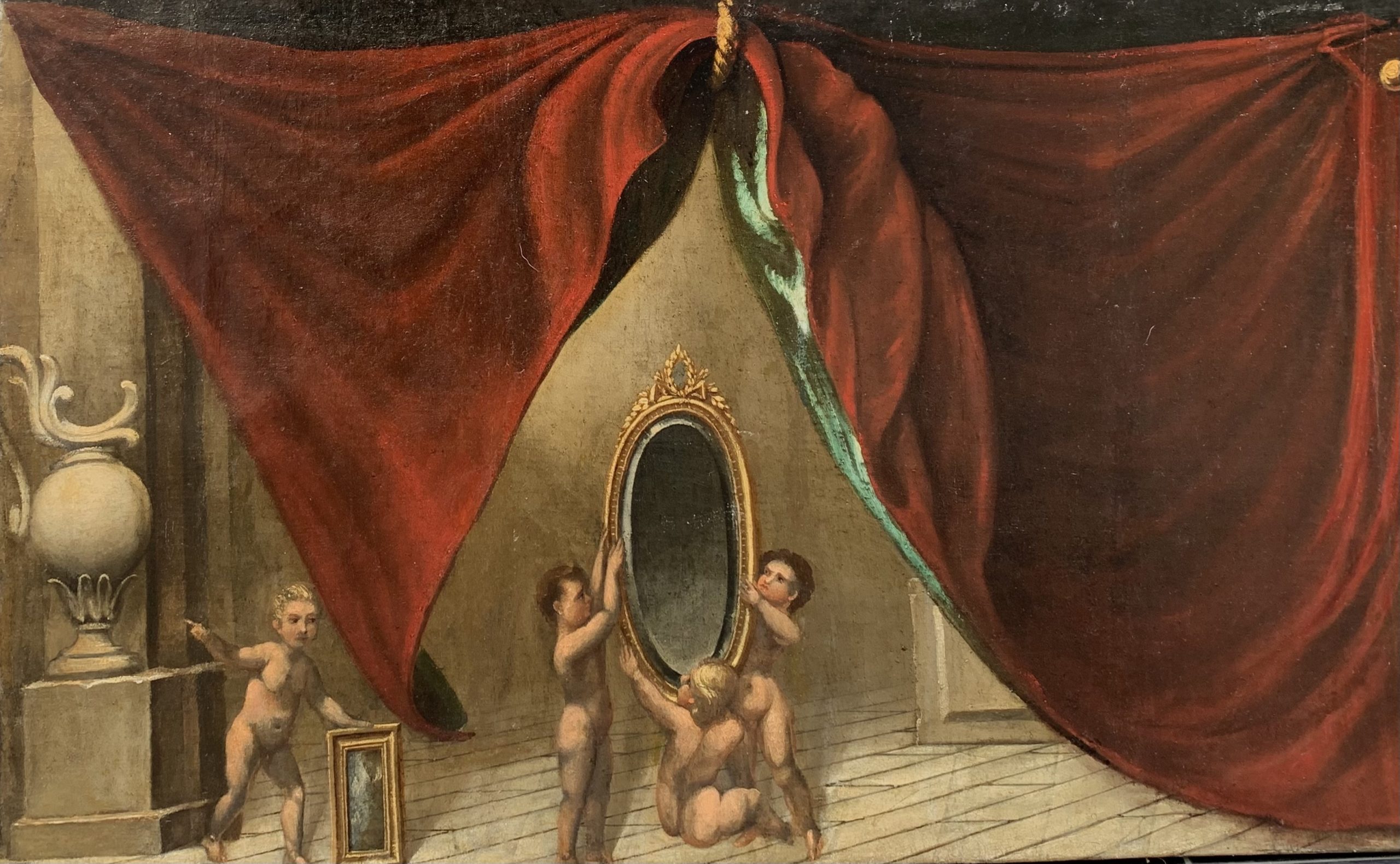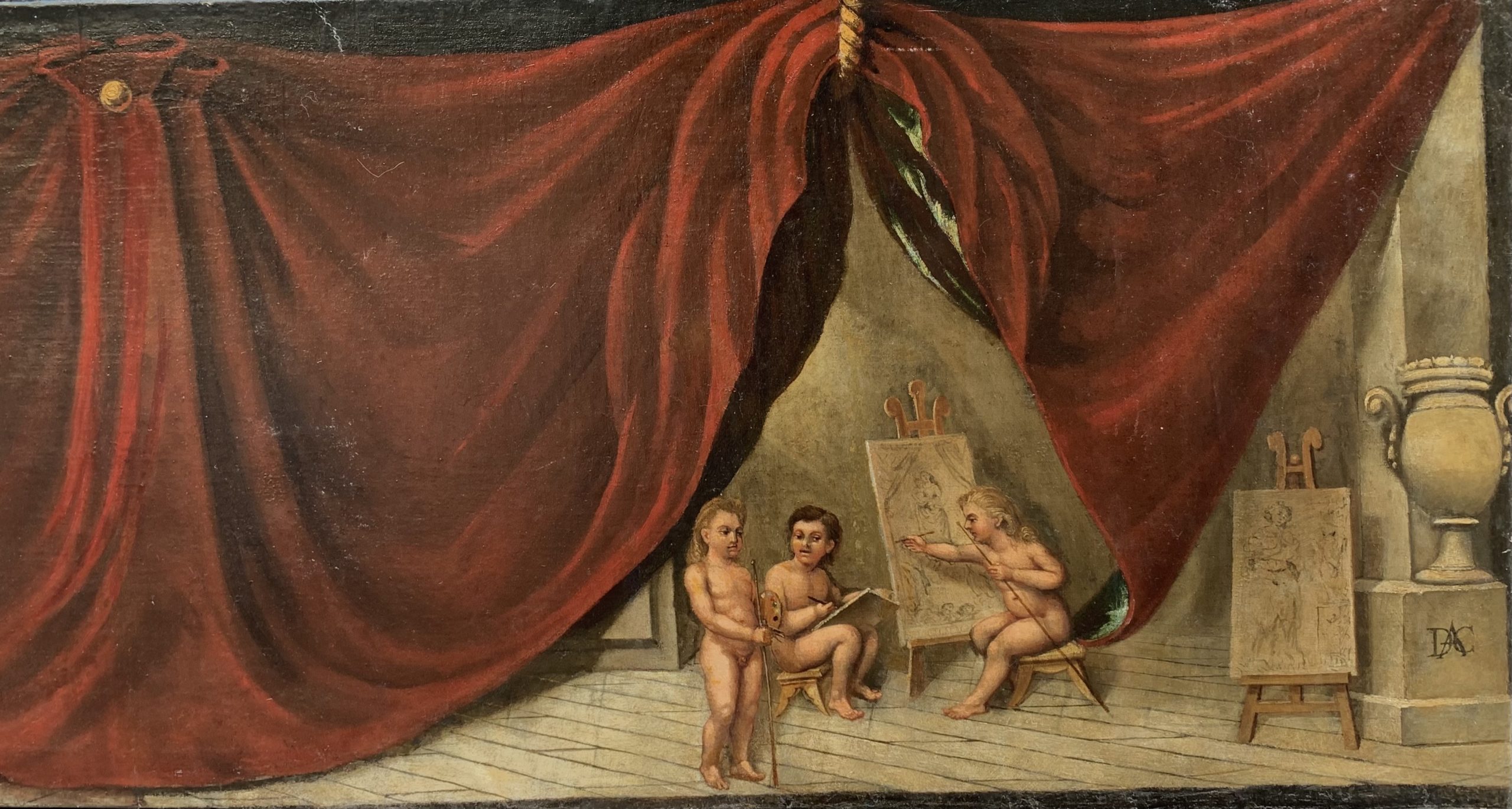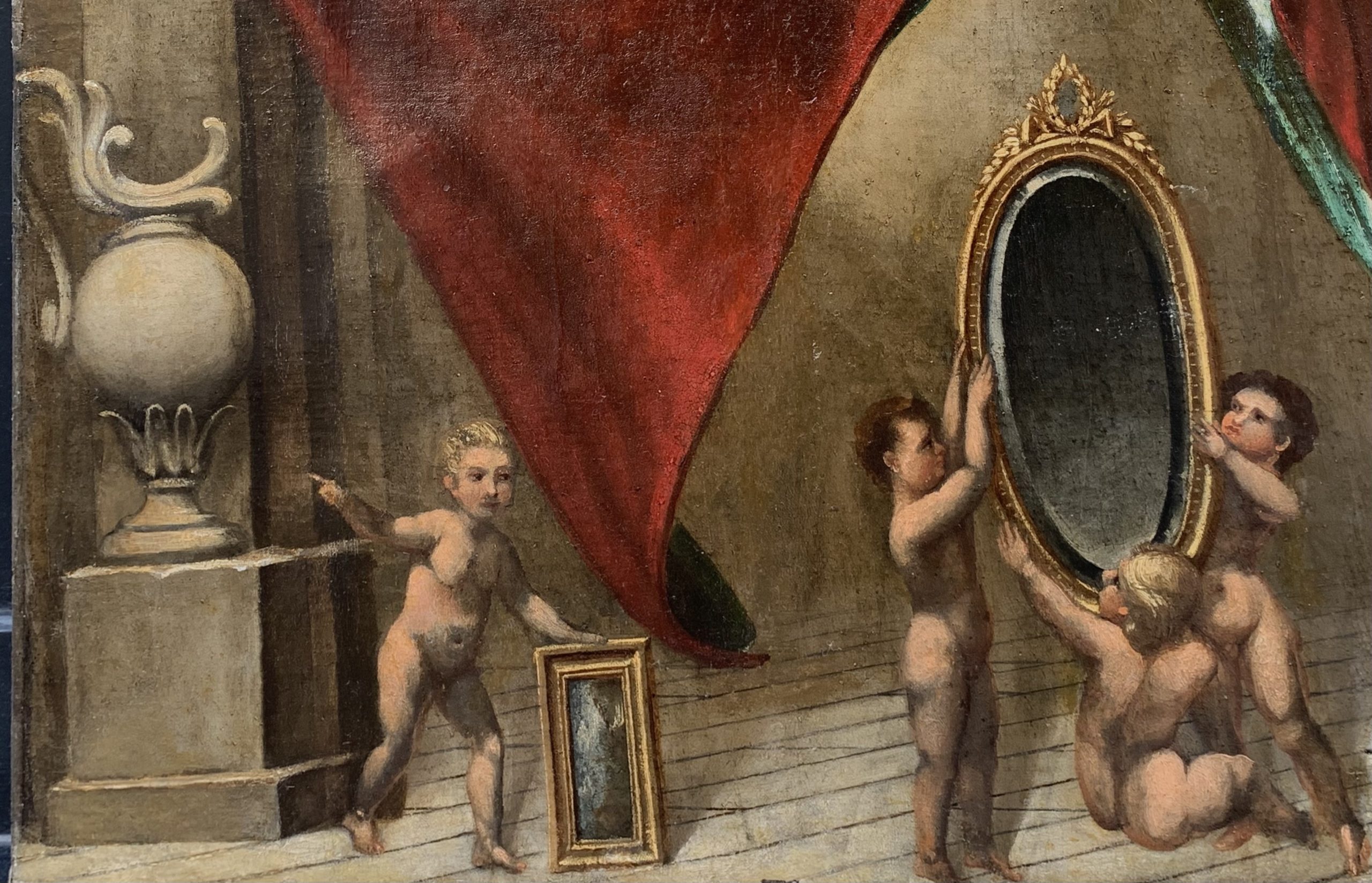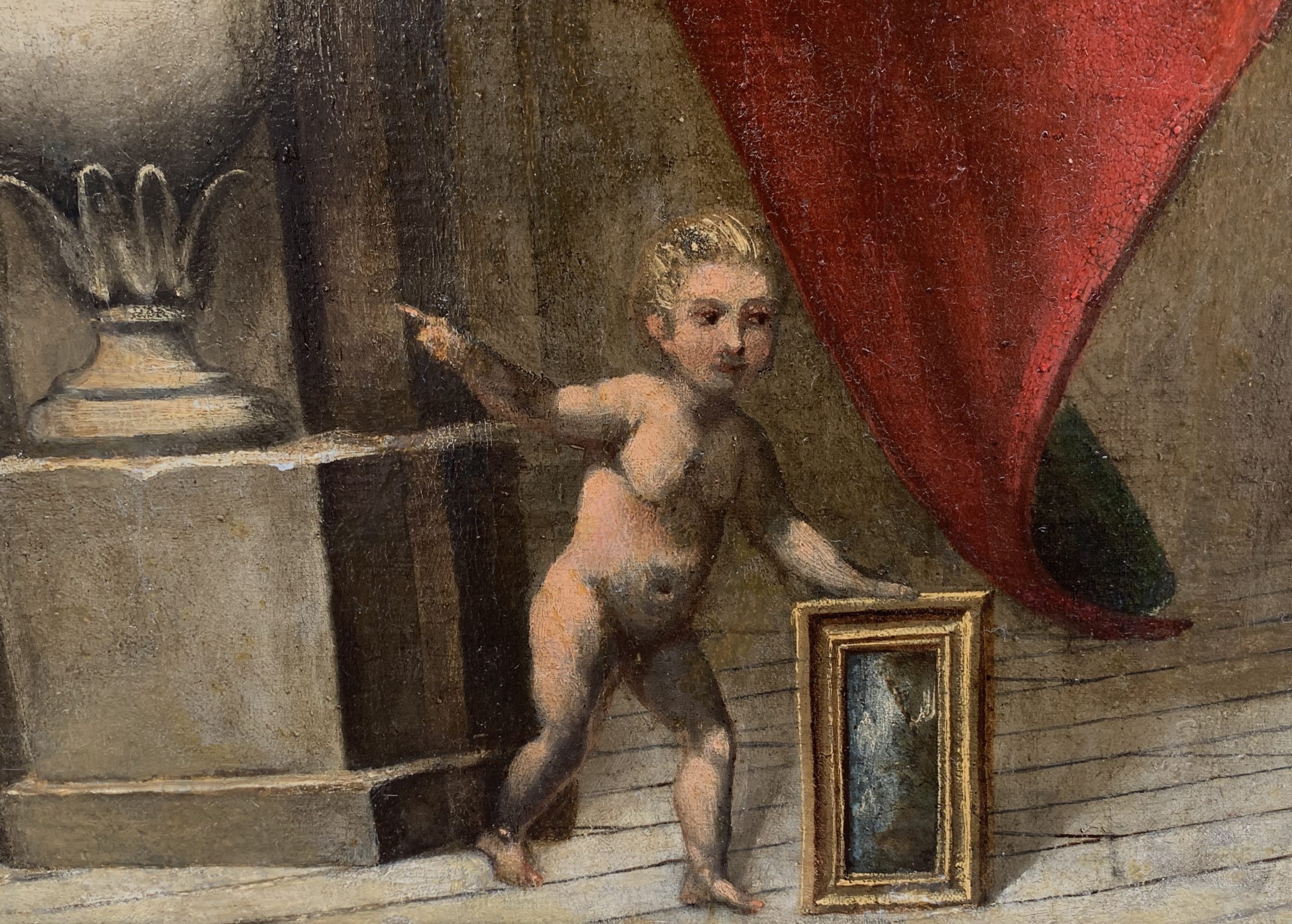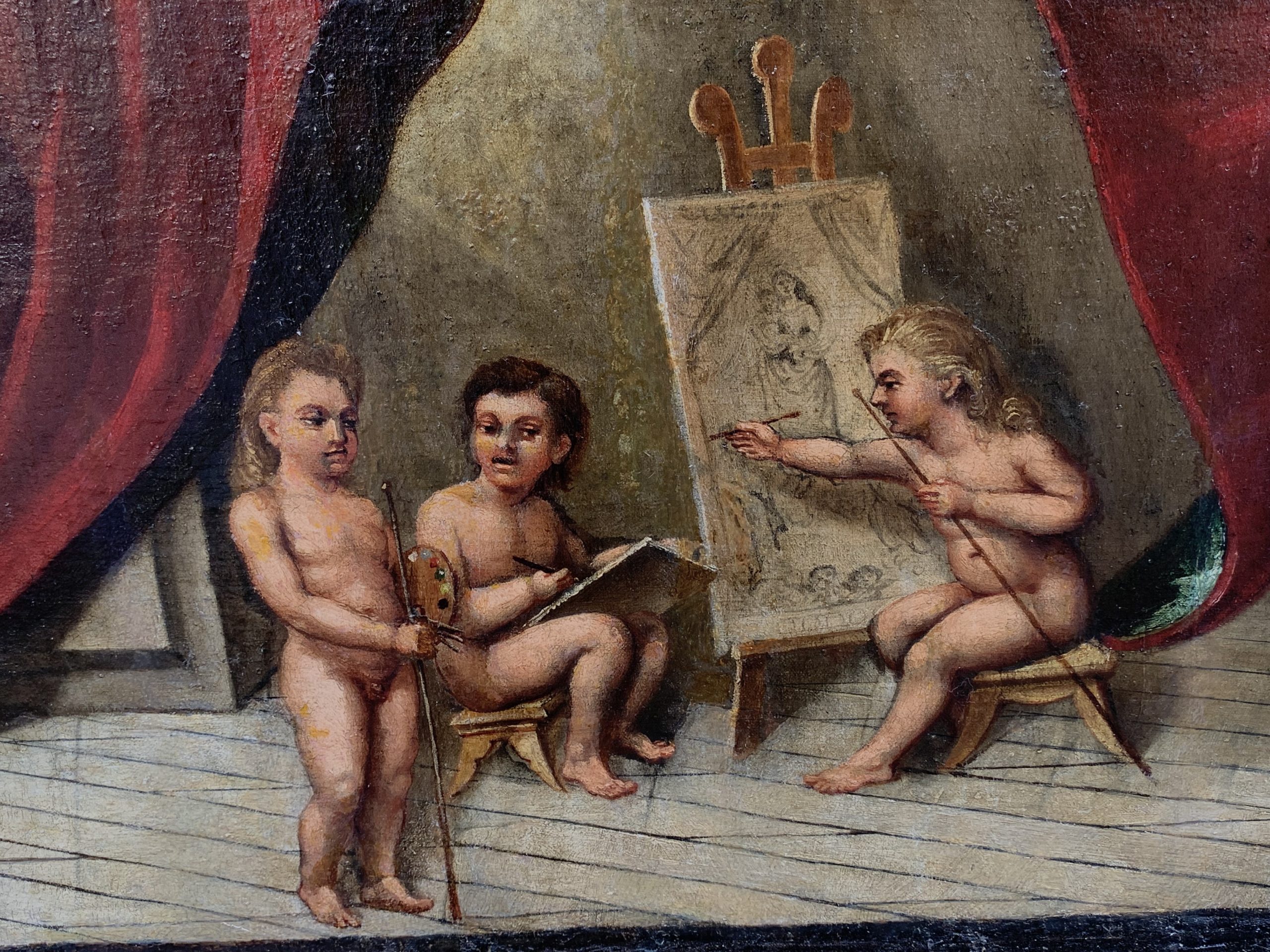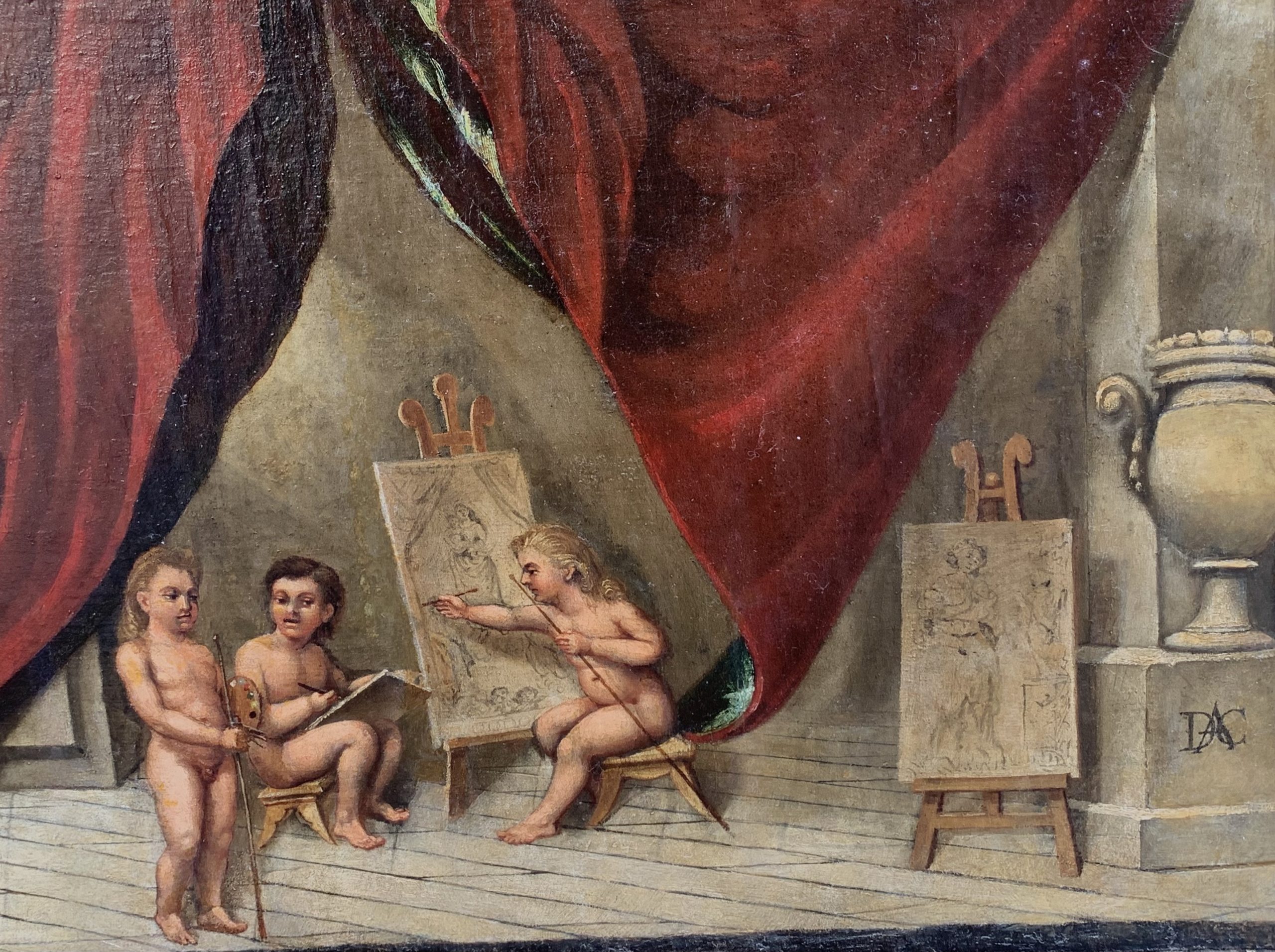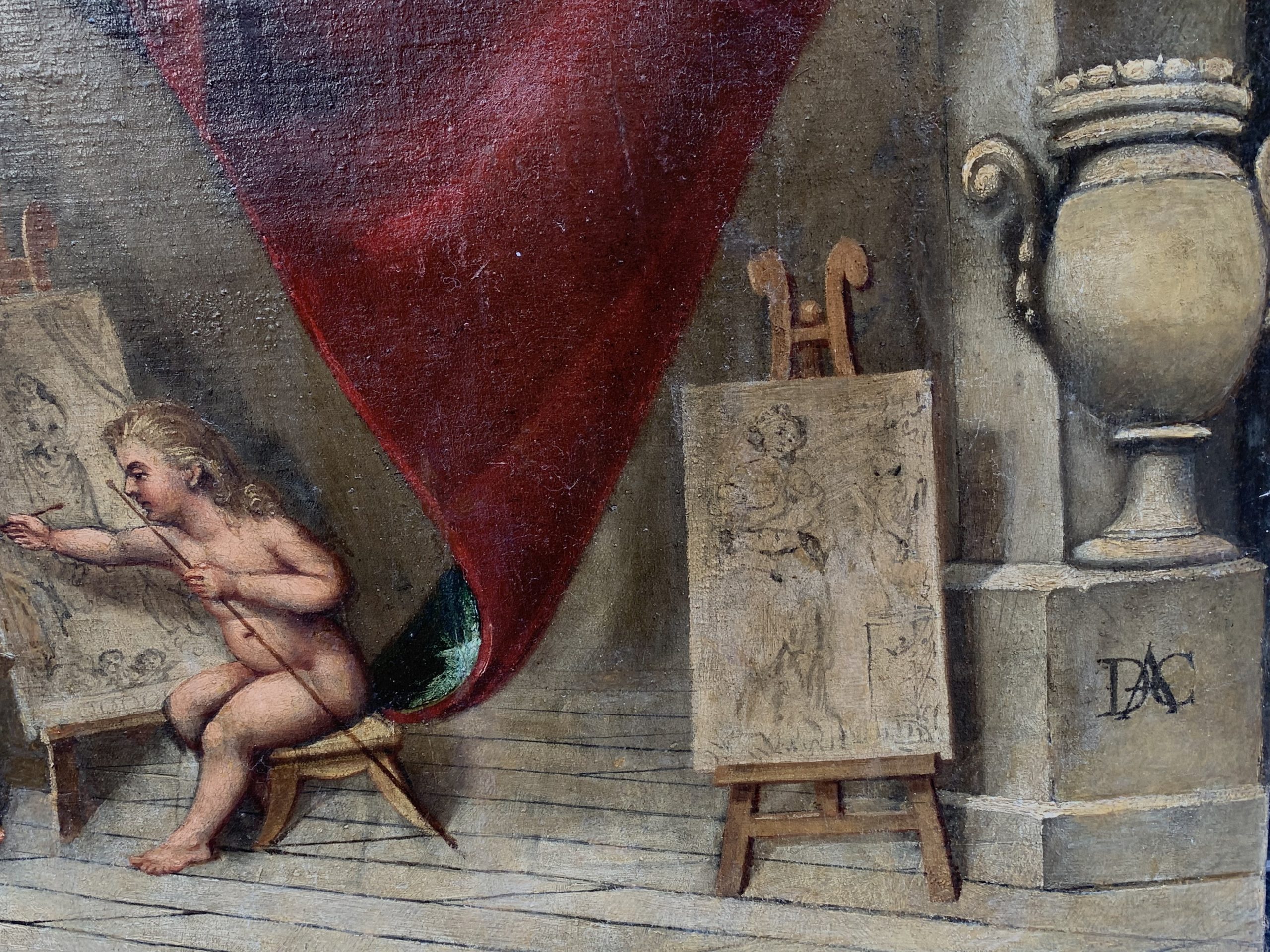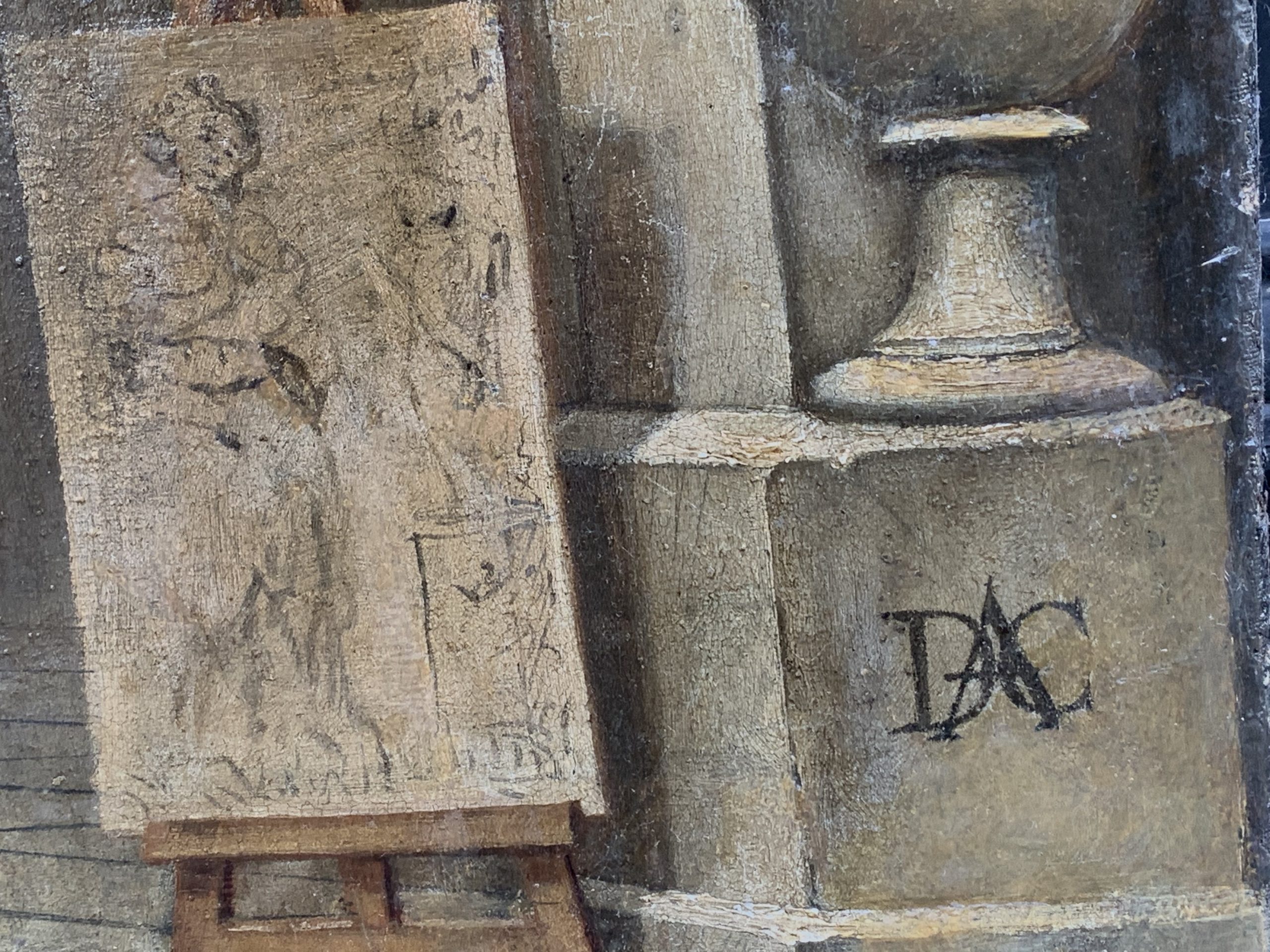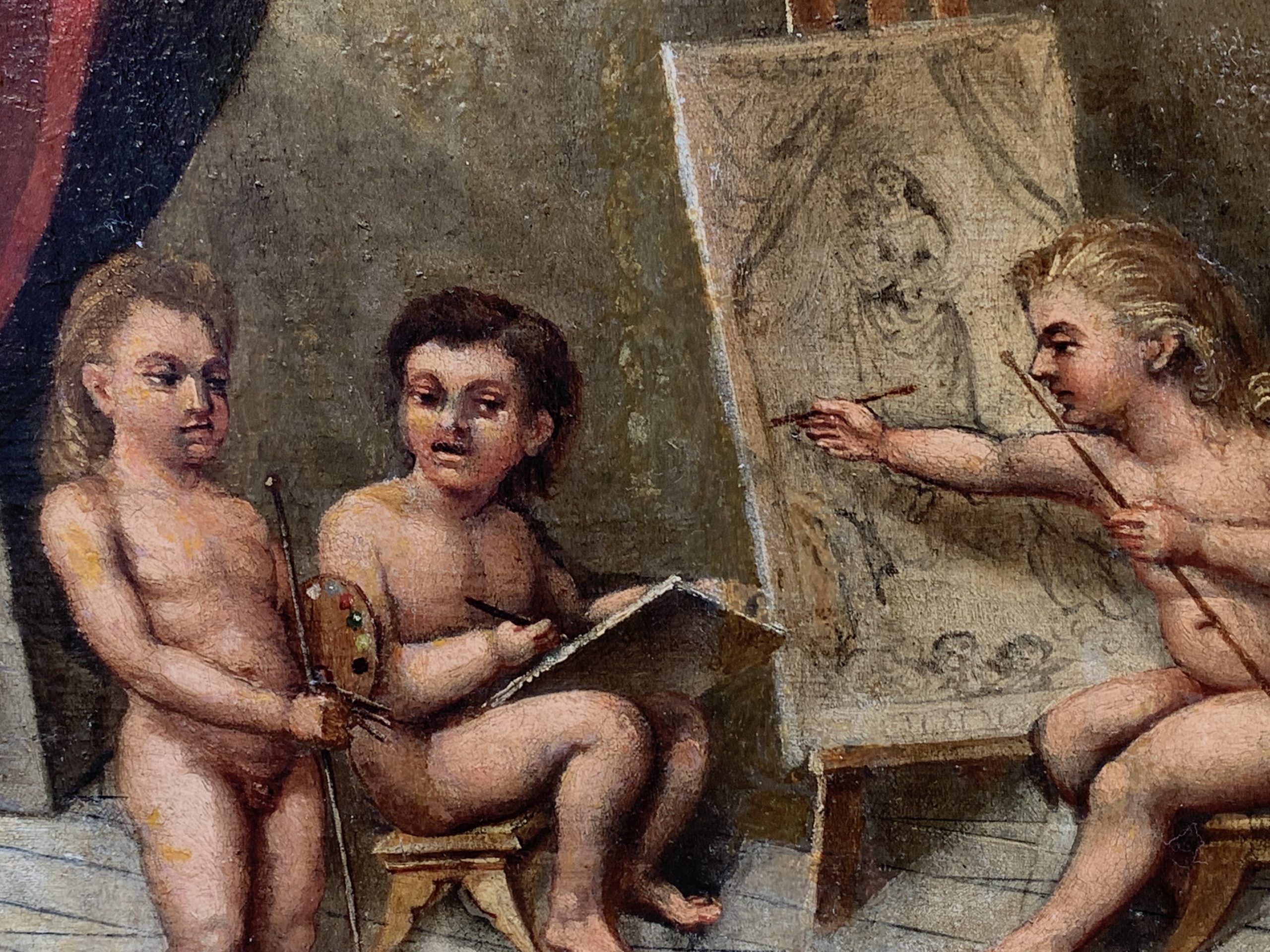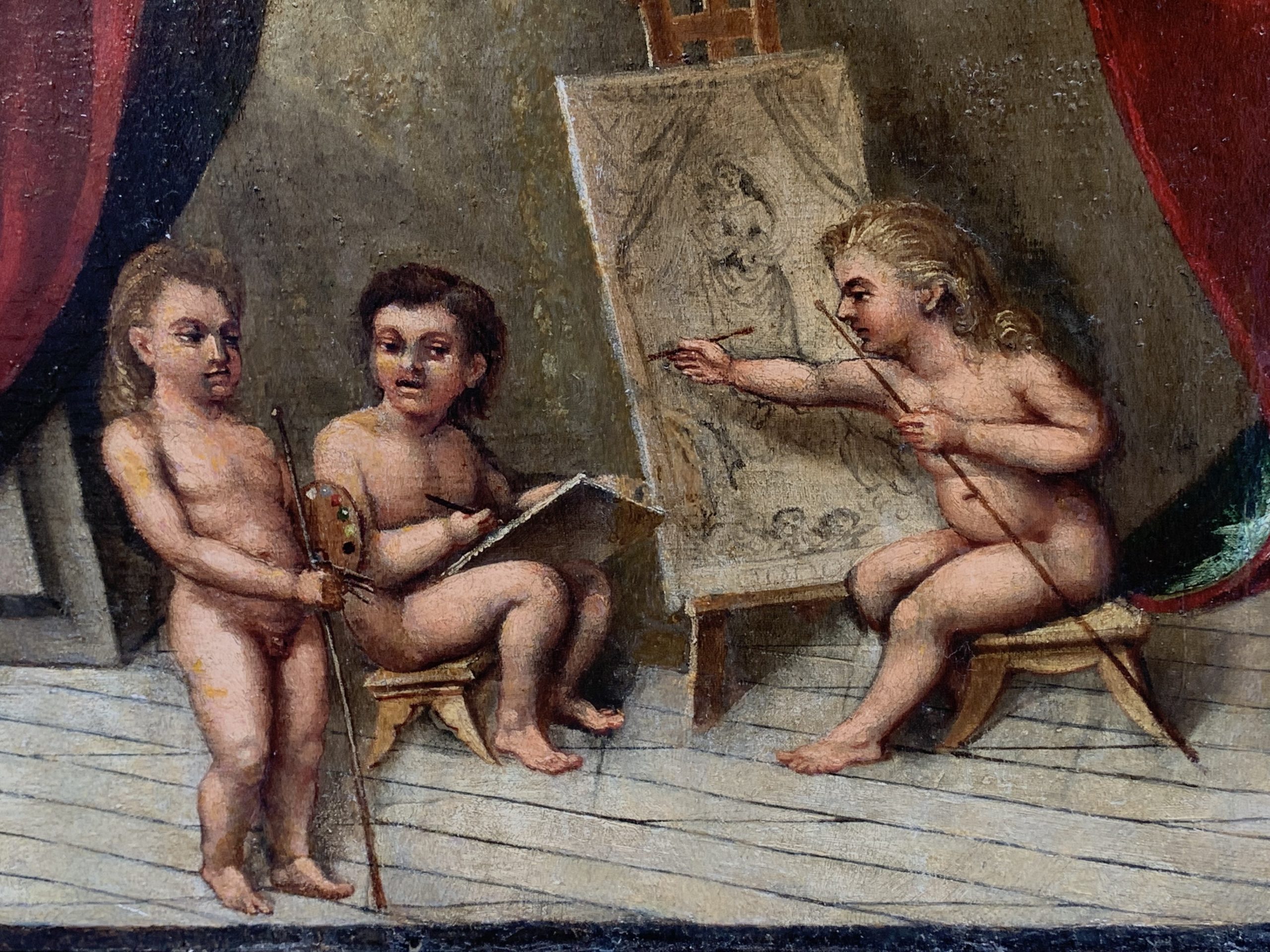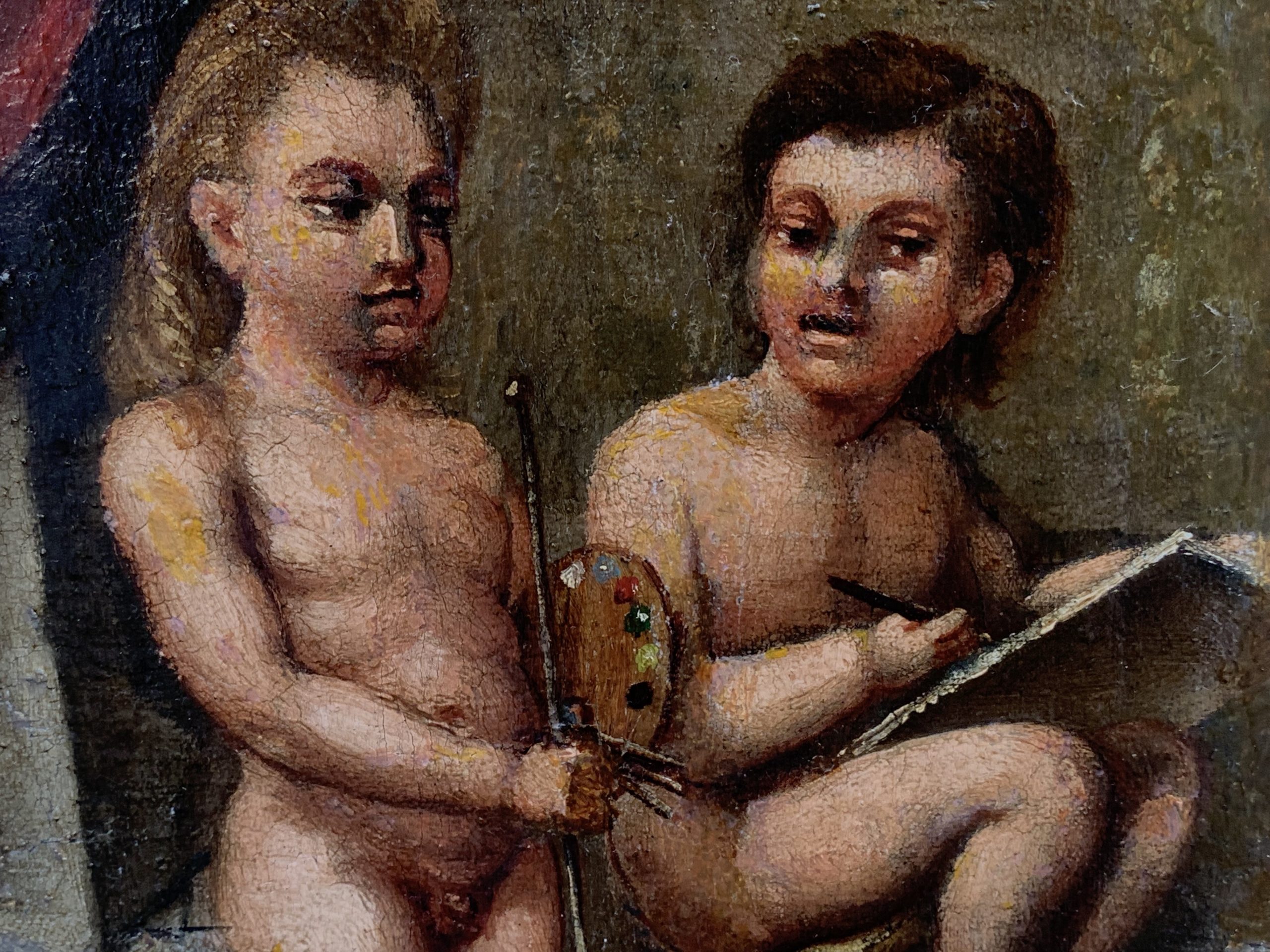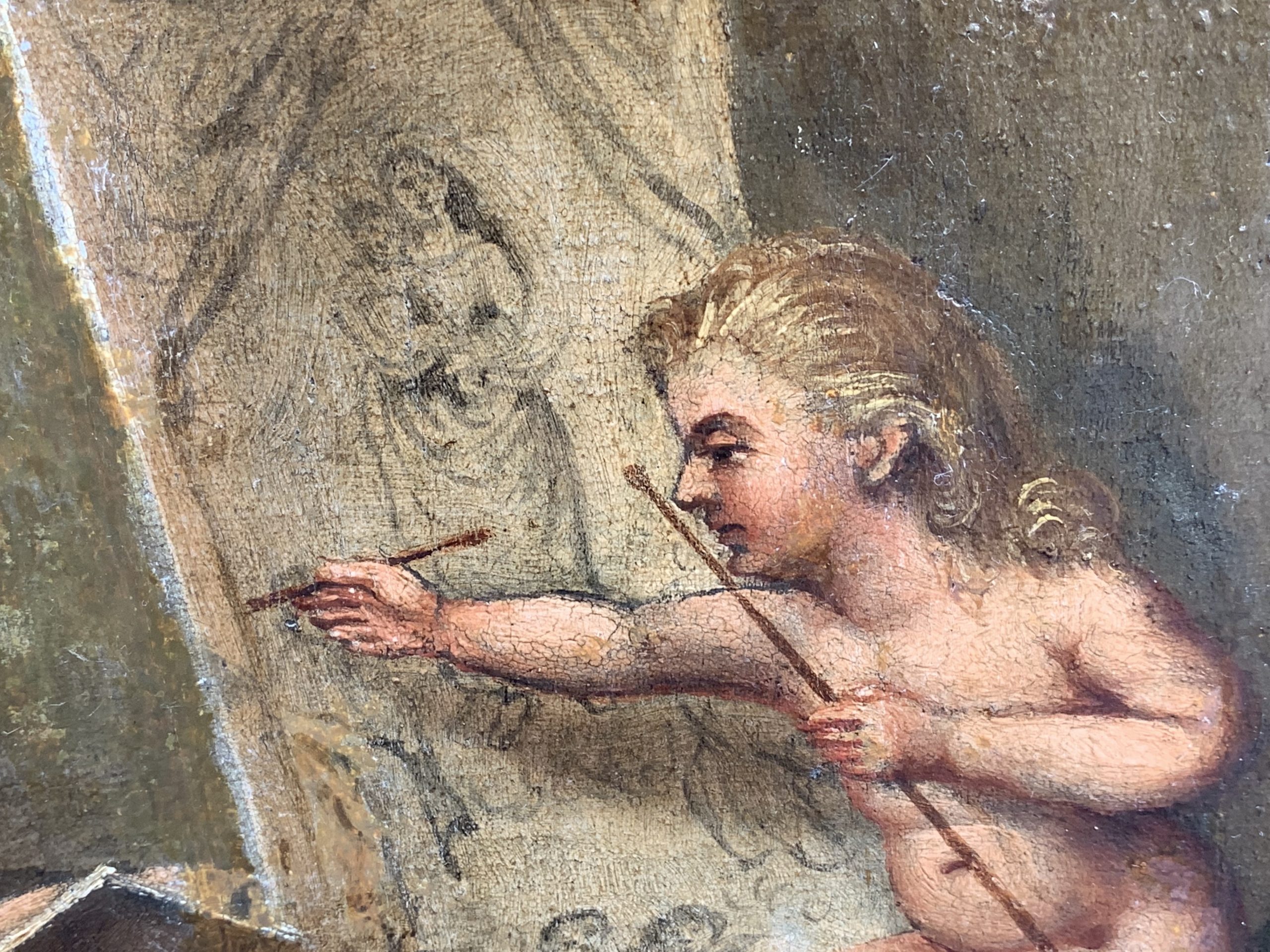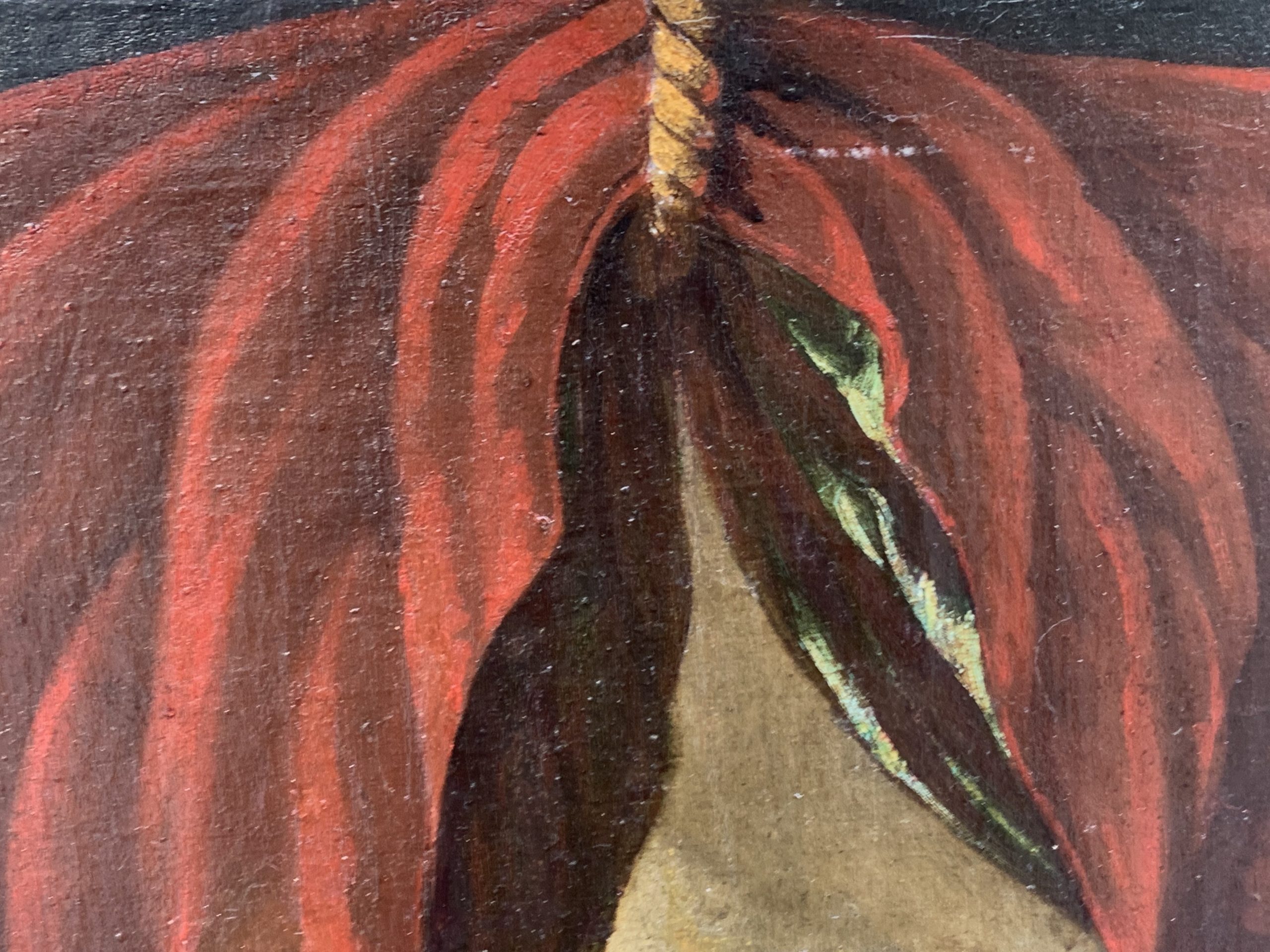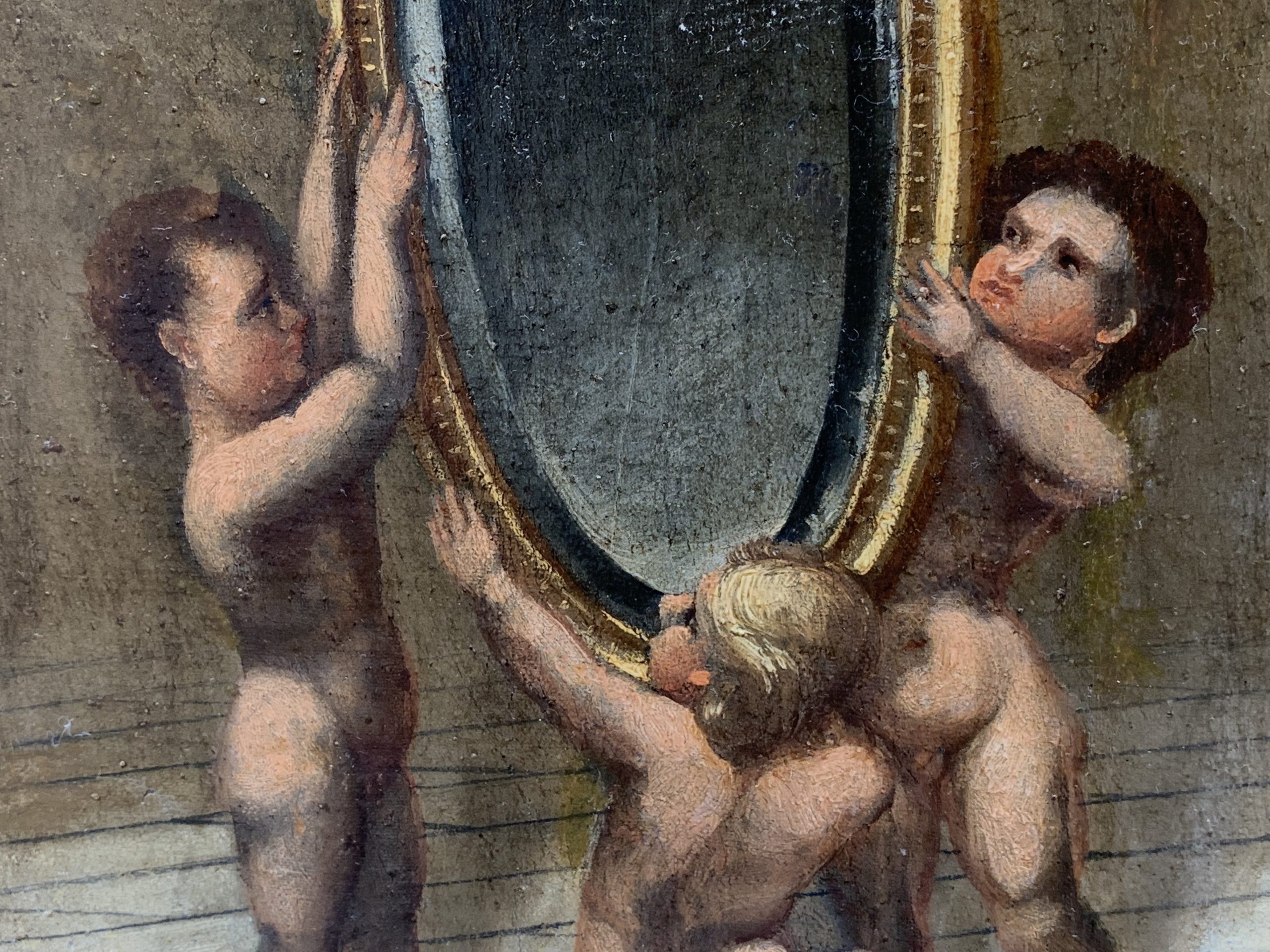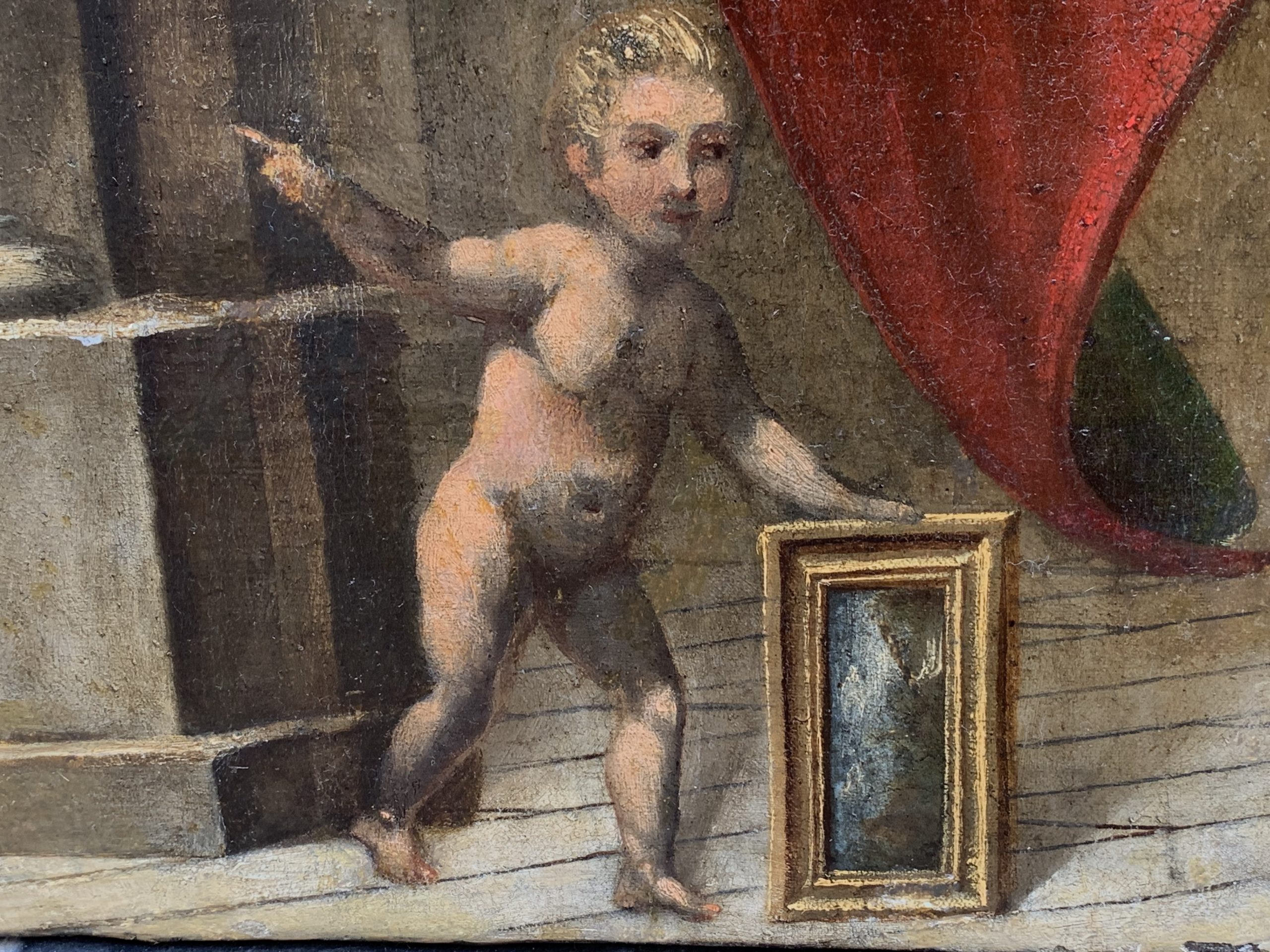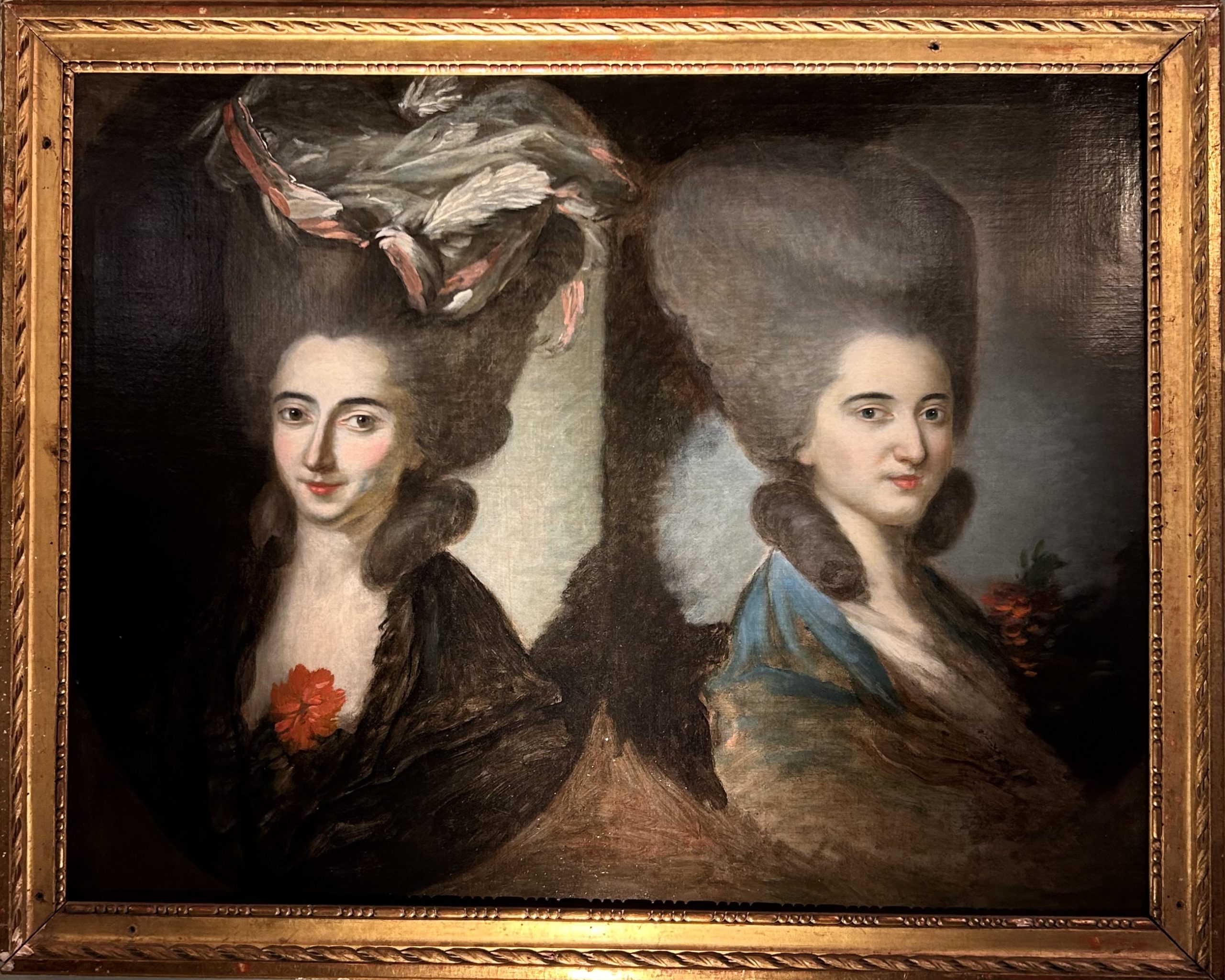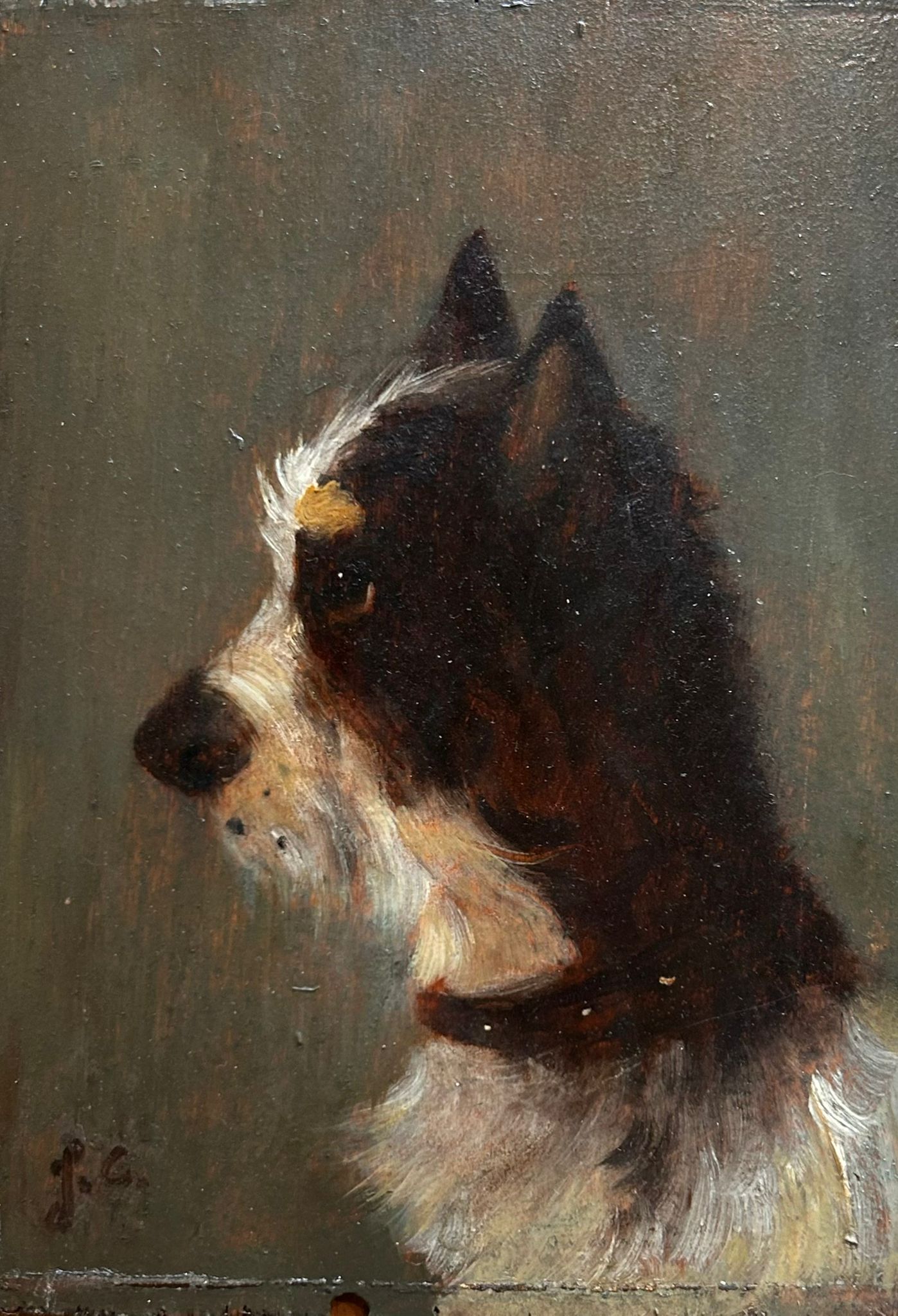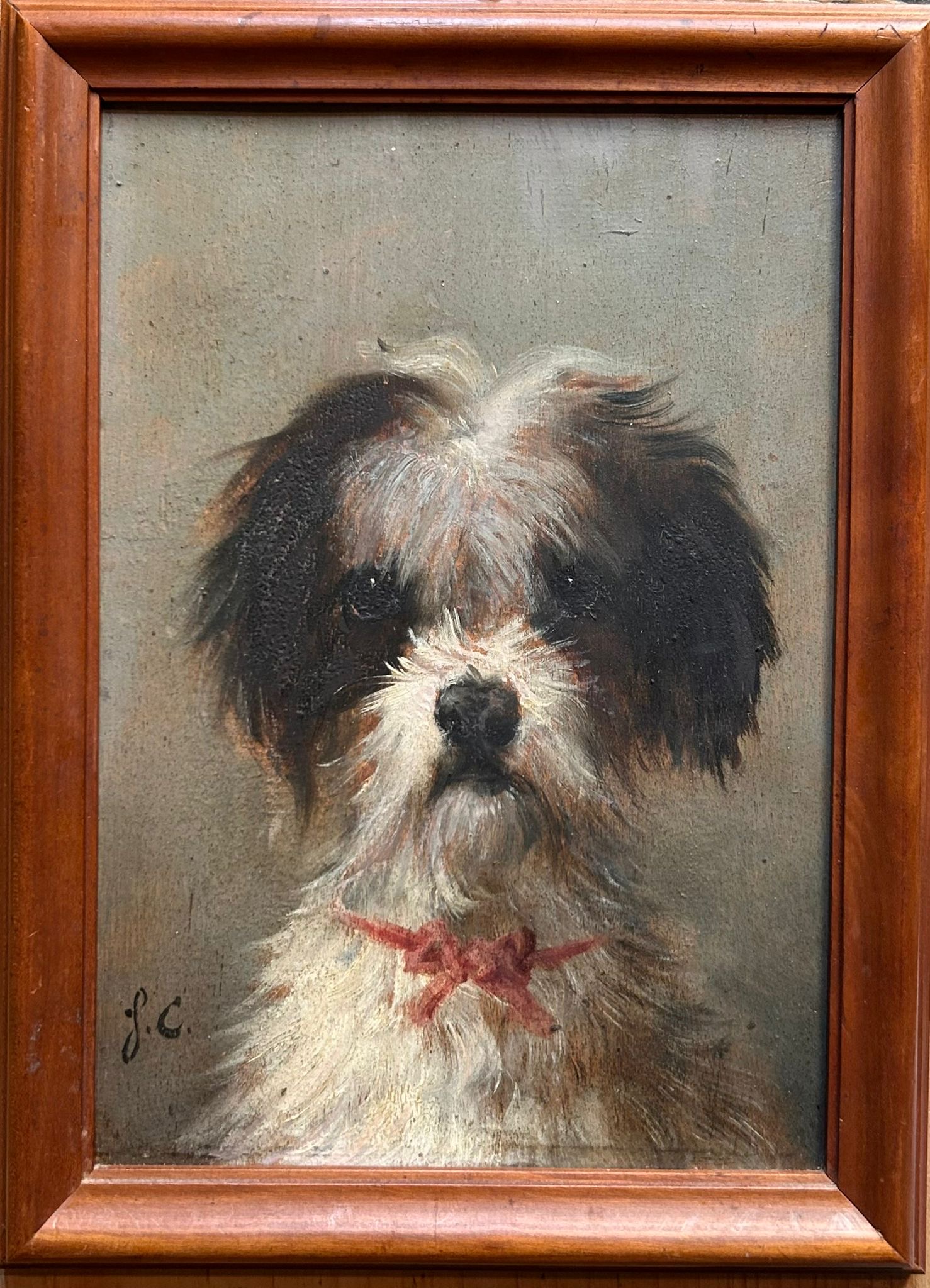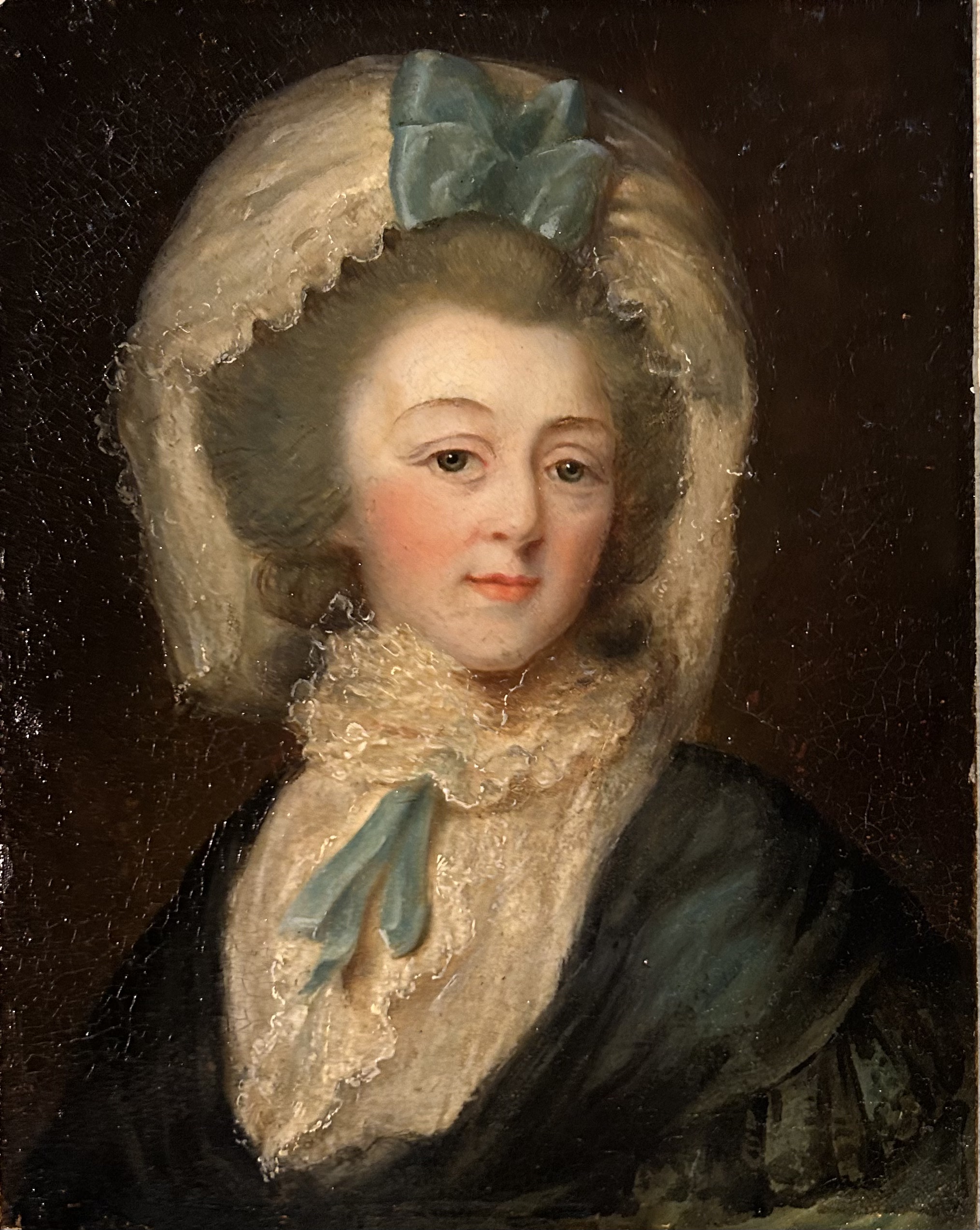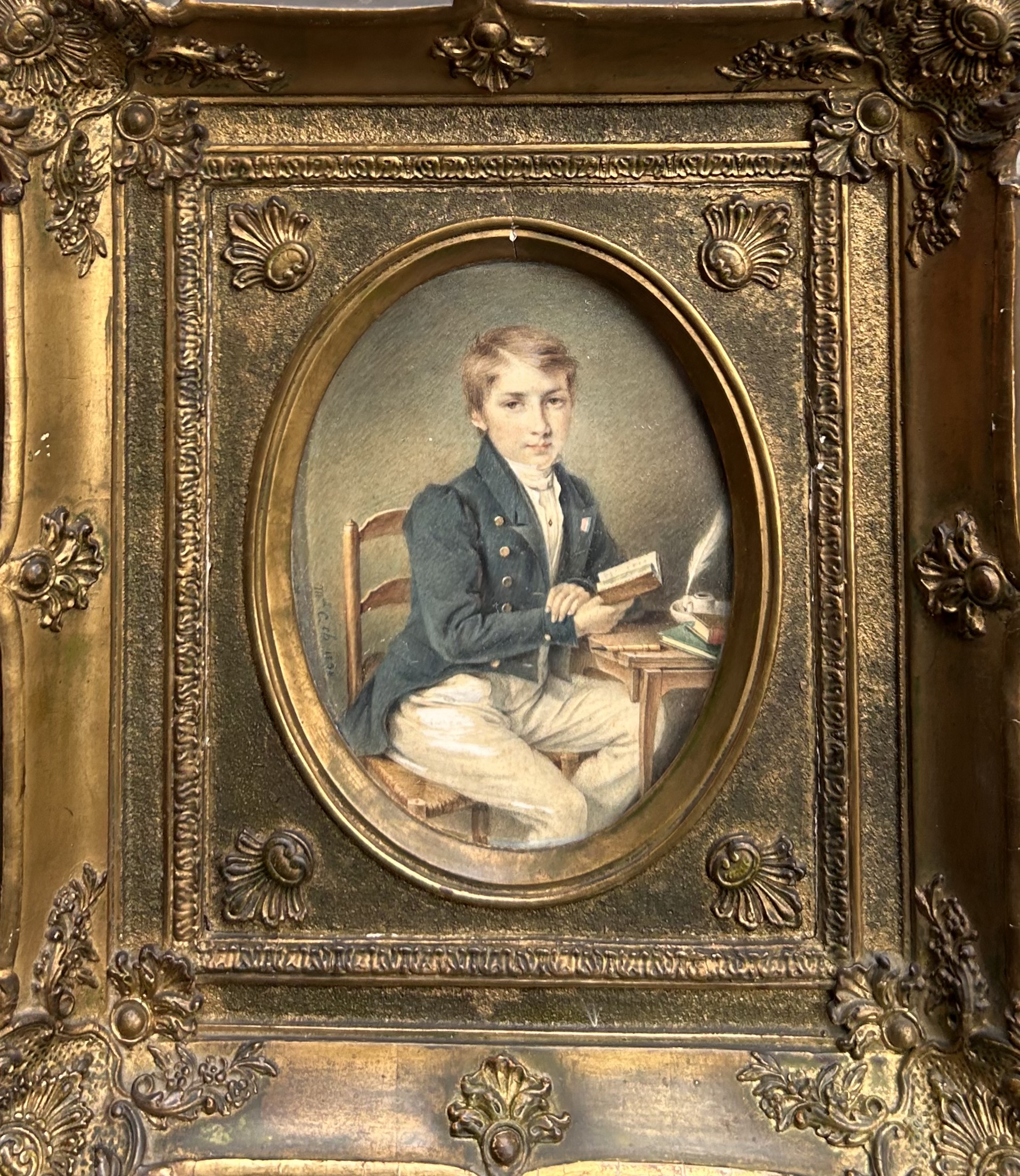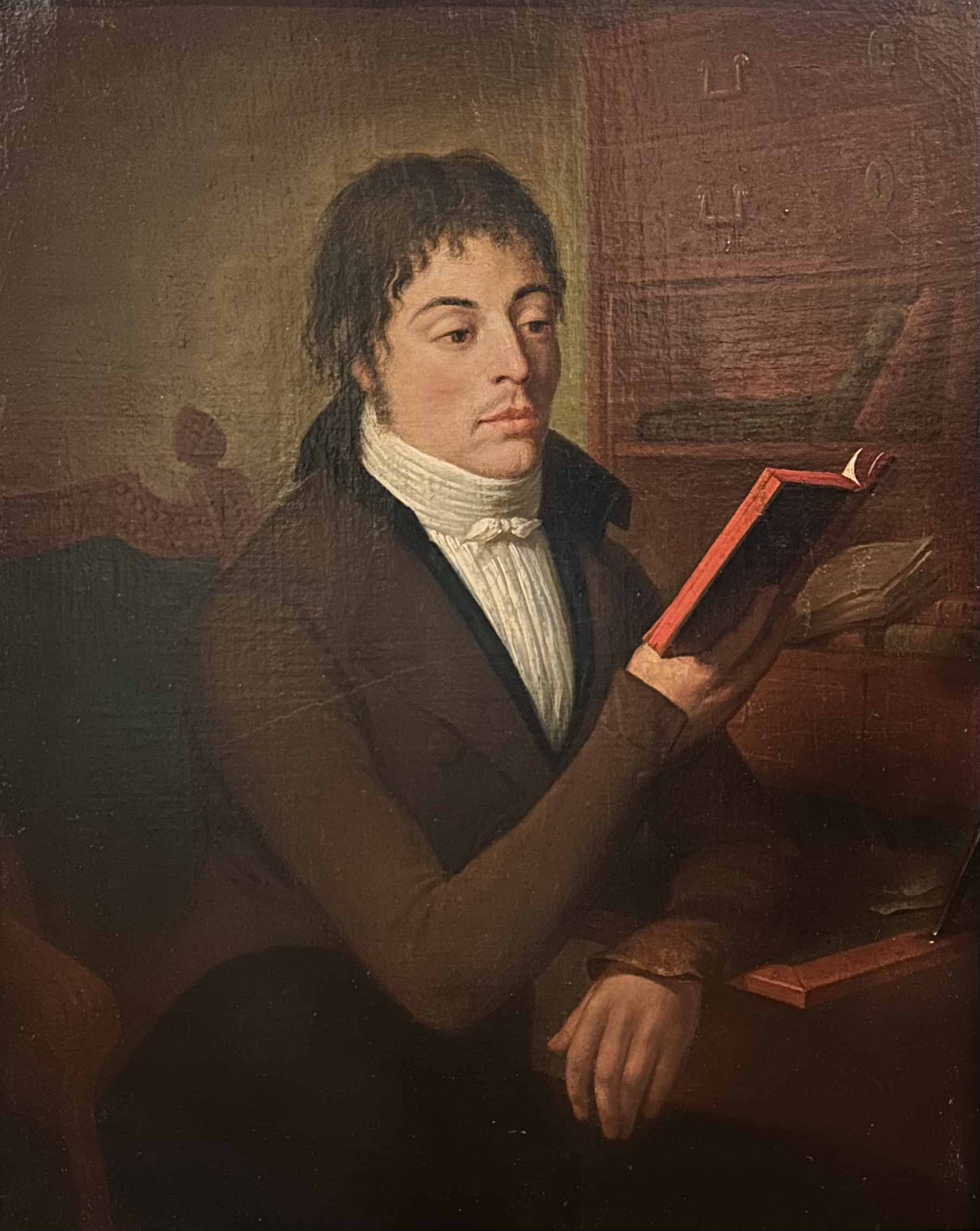Oil on canvas representing the allegory of sight.
This painting is actually composed of two paintings attached and relined. Was it a diptych or a series of several paintings, two of which would have been joined together?
The curtain by its imposing presence separates the two scenes and shows us what are poles away from each other. We notice the delimitation of the two canvases in the middle of this curtain.
The scene on the left represents the allegory of physical sight. The putti move mirrors, which symbolize the gaze, but above all self-knowledge through observation. The mirror reflects physical defects and qualities.
The scene on the right represents the allegory of psychic and intellectual sight. We find putti who paint and sketch pictures. The rightmost putto sketches Raphael’s Sistine Madonna. We recognize the virgin hugging her child in her arms, the two little angels at the foot of the painting, as well as Saint Sixtus.
On the far right of the composition is a painting that is difficult to decipher, could it be Titian’s Venus in the mirror?
18th century
Italy
Length: 77,55 inch (197cm)
Width: 23,62 inch (60cm)
